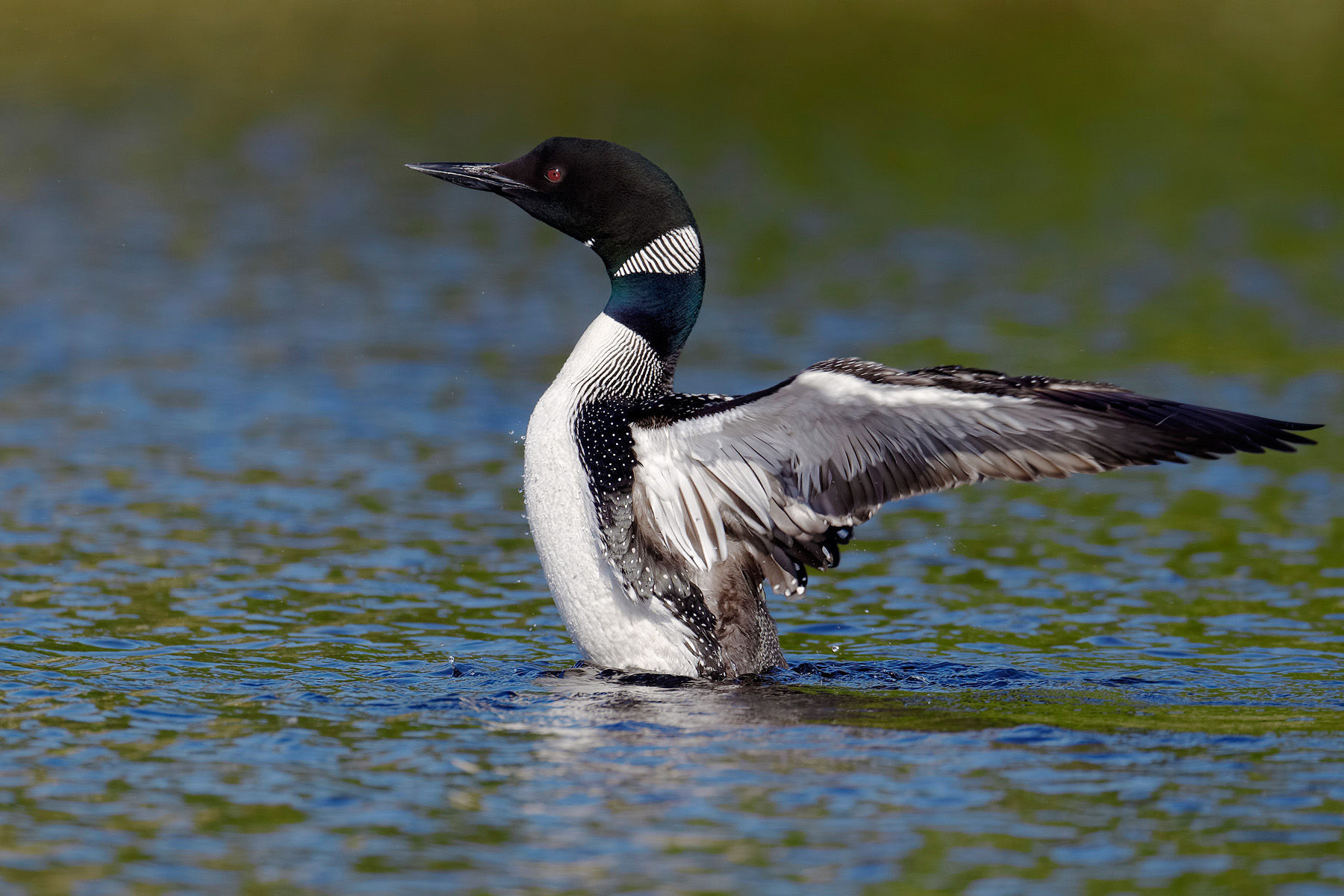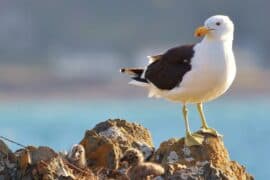Common loon
(Gavia immer)

Description
Gavia immer, also known as the Common Loon, is a large, freshwater diving bird found across North America. These birds are known for their unique calls, striking plumage, and expert diving skills. This article will explore the physical characteristics, habitat, behavior, diet, and conservation status of the Common Loon. Physical Characteristics: The Common Loon is a large, long-bodied bird that can measure up to 36 inches (91 cm) in length and weigh up to 13 pounds (6 kg). They have a distinctive black-and-white checkered back, with a black head and neck, and a white collar that separates the head from the body. The Common Loon also has a thick, straight, pointed bill that is up to 4 inches (10 cm) long, and strong, webbed feet that are set far back on its body, which makes it an expert diver. Habitat: The Common Loon is found across North America, from Alaska to Greenland, and from the northern United States to the southern tip of Mexico. These birds are usually found in freshwater lakes and ponds, although they can occasionally be found in brackish water or near the coast. Common Loons prefer clear, deep lakes with rocky shorelines, and they often nest on small islands or near the shore. Behavior: The Common Loon is a solitary bird that is usually found alone or in pairs. During breeding season, however, they are known for their loud, eerie calls, which can be heard for miles across the water. These calls are used to establish territory and attract a mate. Common Loons are also expert divers and can stay underwater for up to five minutes, thanks to their specialized adaptations such as their thick plumage, air sacs in their bones, and the ability to slow down their heart rate while submerged. They use their webbed feet to propel themselves through the water and their wings to steer. Common Loons are also excellent swimmers and can fly up to 80 miles per hour (128 km/h) to escape danger. Diet: The Common Loon is a carnivorous bird that primarily feeds on fish, crustaceans, and insects. They catch their prey by diving beneath the water's surface and chasing after it. Common Loons have been known to eat a wide variety of fish species, including yellow perch, sunfish, and trout. They have also been observed eating small mammals, such as mice and voles. Conservation Status: The Common Loon is currently classified as a species of least concern by the International Union for Conservation of Nature (IUCN). However, they do face threats from habitat loss, pollution, and climate change. Human activities such as shoreline development, motorized watercraft, and fishing can disrupt their breeding and foraging activities. Additionally, pollution from pesticides and heavy metals can accumulate in the birds' tissues and affect their health. Climate change is also impacting the availability of suitable nesting habitats, as well as changing the timing of migration and breeding seasons. Conclusion: The Common Loon is a fascinating bird with a unique set of physical and behavioral adaptations. Their striking plumage, eerie calls, and expert diving skills make them an iconic species of North America's freshwater lakes and ponds. However, they do face significant threats from human activities and environmental change, and continued conservation efforts will be necessary to ensure their survival in the future.
Taxonomic tree:







